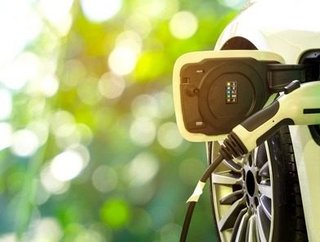V2G: charging towards a greener future

Philip Valarino, Electric Vehicles Lead at EDF Energy, discusses the lesser known positive impacts of smart EV charging solutions as global markets transition away from internal combustion engine-based transport.
More than 1mn new vehicles are bought by businesses every year. Imagine the impact to our carbon footprint if we achieve the UK government’s pledge that, by 2030, at least 50% of new cars and 40% of new vans sold in the UK will be electric?
Over the last 12 months, we’ve noticed a marked increase in the number of customers asking for help in getting set up with eElectric vehicles (EVs), and this is reflected in national figures.
Between 2014 and 2018, the average number of electric cars registered jumped by 900%. But this is just the start; there are currently 5mn EVs amongst 1.5bn car stocks worldwide.
Whilst we are relatively early on in the adoption curve, it’s clear that EVs are here to stay and are destined for growth.
EDF Energy has almost 20 years’ experience in the UK EV market – having installed the first charging points in London in 1999 and powered the EV charging network across Olympic sites for the London 2012 Olympic and Paralympic games. We have been working hard to invest in and uncover the best technology and products in order to make switching to EVs an easy choice.
Smart charging
One of the ways we are making EVs more attractive to businesses is through smart charging technology. Smart charging, an umbrella term that covers all intelligent functionalities in charging stations, allows customers greater control over how and when their car charges. For example, smart charging can allow customers to charge their vehicles at times when electricity is cheaper, such as overnight. This means that they avoid peak time costs.
Linked to smart charging is Vehicle to Grid technology (V2G), which enables power to be drawn from car batteries and fed back into the grid when the car is not in use. Selling unused energy back to the grid allows customers to generate an additional stream of revenue that goes hand-in-hand with the cost saving function of smart charging.
Using the V2G systems’ storage capacity, EVs can send unused electricity back to the grid for customers to either participate in energy markets by sending it back to the grid, providing savings on energy costs and generating additional revenue, or to use the energy themselves.
V2G chargers can therefore help businesses generate revenues from vehicles that have previously only been a cost on their balance sheet – saving hundreds of pounds a year.
SEE ALSO:
Cross-industry partnership
Crucial to the development of V2G technology are cross-industry partnerships. Since 2018, we have been working with a leading green technology company to install 1,500 V2G chargers in the UK. The chargers are offered to our business customers, and will provide them an additional 15MW of energy storage capacity, which is roughly enough energy to power around 30,000 homes for an hour.
Most recently, EDF Group and Nissan announced a cooperation agreement to support the development of smart charging solutions by bringing our heads together and sharing the technologies mastered by each of our businesses.
As part of the agreement, Nissan is responsible for the sale of V2G compatible electric vehicles like the Nissan Leaf and e-NV200, while we are responsible for V2G charging solutions and related services. Creating a practical solution that benefits businesses and wider society, the partnership marked a huge step towards realising the electric future.
The road to Generation Electric
As well as the obvious financial benefits, smart charging and V2G support the overall balance of electricity supply, distributing available power efficiently and flexibly.
In order to meet our country’s carbon reduction targets, we need to increase the proportion of our energy that comes from low-carbon sources. However, the production of renewable energy – such as wind and solar – is intermittent and therefore creates fluctuations in our energy system. Such fluctuations need to be managed.
V2G chargers allow a two-way flow of electricity between an EV and the charger, representing a valuable opportunity to enhance the benefits of EVs through provision of large volumes of cheap storage and flexibility.
Smart charging will therefore play a significant role in balancing the grid as the country not only moves towards wider adoption of EVs, but also as we continue to transition to a low-carbon energy mix.
We’re seeing a new generation of businesses emerge that are both recognising the opportunities presented by the low-carbon economy and beginning to reap benefits from it. We call these businesses “Generation Electric” because they are part of a quiet revolution that is using, generating and sharing low-carbon electricity.
V2G technology epitomises this movement; allowing businesses to power their fleet with low-carbon electricity and support the wider grid system, resulting in better energy efficiency and self-sufficiency.
If you’re interested in joining this movement, get in touch with a member of our team at [email protected].






